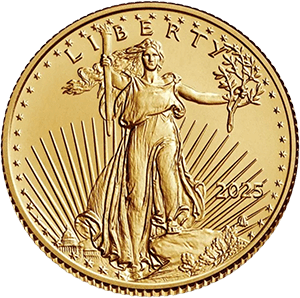1. Context & Historical Perspective
1.1 Gold’s Price History—A Long Climb
-
For much of history, gold’s price was fixed or controlled (e.g. under the gold standard).
-
Starting in the 1970s, gold floated more freely against fiat currencies, and its price began to reflect market dynamics (inflation, interest rates, monetary policy, safe-haven demand).
-
In recent years, gold has been steadily rising, breaking successive “psychological levels” (e.g. $2,000, $3,000, etc.).
-
Just before this new high, gold was trading near $3,800–$3,900 per ounce in many markets.
Thus, gold crossing $4,000 is not a random fluke, but the culmination of strong upward momentum and several fundamental tailwinds.
1.2 What Does “$4,000 Gold” Mean, Exactly?
When people say “gold has surpassed $4,000,” they are typically referring to the spot price (or sometimes futures contracts) trading above $4,000 per troy ounce. This reflects the broad consensus price in global markets at a given moment. (Spot means the immediate delivery price, adjusted for premiums, logistics, etc.)
The crossing of $4,000 is symbolic—just as crossing $1,000 or $2,000 was in earlier eras. It signals that many of the underlying forces supporting gold are aligning strongly.
2. Key Drivers Behind the Surge
Gold doesn’t rise in a vacuum. There are multiple interlocking factors pushing it upward toward and beyond $4,000. Let’s dive into the main ones:
2.1 Weakening U.S. Dollar
-
Gold is priced in U.S. dollars internationally; when the dollar falls, gold becomes cheaper (relatively) in other currencies, which boosts demand.
-
Over recent months, the U.S. dollar has shown weakness amid concerns about U.S. fiscal stability, inflation, and expectations of Federal Reserve easing.
-
Some analysts argue that gold’s rally is in part a “dollar hedge”—investors buying gold because they don’t trust the dollar’s future strength.
2.2 Expectations of Interest Rate Cuts / Monetary Easing
-
High real interest rates are a headwind for gold (because gold yields nothing). If real rates fall (or go negative), gold becomes more attractive.
-
Markets are increasingly pricing in Fed rate cuts or accommodative policy down the road.
-
The uncertainty around the Fed’s future actions is reinforcing gold’s appeal as a hedge.
2.3 Central Bank and Institutional Demand
-
Global central banks have been accumulating gold reserves as part of diversification away from U.S. Treasuries and to reduce currency risk.
-
Asset managers, ETFs, and institutional investors are increasingly allocating to gold, driving inflows into gold-backed funds.
2.4 Safe-Haven Demand Amid Global Uncertainty
-
Geopolitical tensions (conflicts, trade disputes, political instability) tend to drive demand for non-correlated assets like gold.
-
Issues such as the U.S. government shutdown, fiscal stress, and sovereign risk fears are contributing to investor unease and pushing flows into gold.
2.5 Inflation & Real Rates
-
Persistently high inflation erodes the value of fiat money; gold is often seen (rightly or wrongly) as a store of value or hedge.
-
If inflation remains sticky while monetary policy loosens, real (inflation-adjusted) rates could decline further, favoring gold.
-
Market participants are watching inflation surprises and CPI/PCE data closely, since surprises higher than expectations often push gold upward.
2.6 Technical Breakouts & Market Momentum
-
From a technical analysis standpoint, gold has breached key resistance zones, triggering momentum trading, stop orders, and speculative follow-through.
-
Once a psychological barrier like $4,000 is breached, more traders jump in on breakouts, further accelerating gains.
3. Why Crossing $4,000 Matters (and What It Signals)
3.1 Psychological & Symbolic Significance
-
Crossing a round number like $4,000 is a milestone. It boosts sentiment and expectations.
-
It can reset investor psychology: what was once “too high” becomes plausible.
3.2 Validation of a Bull Market
-
Hitting a record high suggests that the bullish trend is still intact and strong.
-
It also reassures those who were skeptical of gold’s rally that the momentum is real.
3.3 Pressure on Alternative Assets
-
Some capital may rotate out of equities, bonds, or fiat into gold.
-
Bond yields, credit conditions, and flow dynamics could be influenced.
3.4 Implications for Currency & Macro Policy
-
Central banks and sovereign wealth funds may accelerate diversification away from the dollar.
-
It may feed into inflation expectations, which in turn can influence central bank decisions.
-
The higher gold goes, the greater the pressure on monetary authorities to defend their currencies or credibility.
4. Risks, Caveats & What Could Derail the Run
No rally is without risks. Here are key counterpoints and cautionary factors:
4.1 Overbought Conditions / Technical Reversal
-
Markets often experience corrections even in a strong trend. When a rally becomes too sharp, pullbacks are common.
-
If gold gets “overextended,” profit-taking or technical resistance may push it back.
4.2 Faster-Than-Expected Rate Hikes / Hawkish Surprise
-
If the Fed or other central banks surprise markets with hawkish moves or delay cuts, it could reverse the trend.
-
Strong economic data (employment, inflation) might force policy tightening.
4.3 Strengthening U.S. Dollar
-
A rebound in the dollar would put downward pressure on gold.
-
Capital flows into U.S. Treasuries or dollar-denominated assets could reverse the trend.
4.4 Diminished Safe-Haven Demand
-
Easing geopolitical tensions or reduced market stress could reduce demand for gold as a buffer.
-
If markets regain confidence, risk assets (stocks, credit) might draw capital away from gold.
4.5 Supply & Liquidity Constraints
-
Any disruption in gold supply (mining, logistics, refining) or liquidity stress could create distortions.
-
Additionally, bullion premiums, storage costs, and transport costs can eat into gains.
4.6 Long-Term Valuation Concerns
-
Some analysts caution that a $4,000 price might reflect euphoria rather than fundamentals.
-
The price might overshoot, and downside risk grows with elevated valuations.
5. What Analysts & Institutions Are Predicting
Let’s look at what reputable financial institutions and market analysts are saying about gold’s path going forward:
So, while many forecasts put $4,000 as plausible (especially into 2026), there is not universal consensus that gold will sustain that level easily.
6. What This Means for Investors & Stakeholders
6.1 Portfolio Implications
-
Gold’s outperformance may lead investors to increase allocations to precious metals.
-
Those holding gold may see strong unrealized gains (if they bought earlier), but should also evaluate risk.
-
Diversification is key—no one asset should dominate.
6.2 For Miners & Related Sectors
-
Gold mining companies stand to benefit from higher margins.
-
Investors may turn toward producers, royalty/mining ETFs, etc.
6.3 For Currency & Debt Markets
-
A high gold price reflects—or can help reinforce—concerns about currency debasement and sovereign debt sustainability.
-
Countries with large external liabilities (especially in foreign currency) may feel increased pressure.
6.4 Macro & Policy Impacts
-
Central banks might accelerate reserve diversification away from dominant currencies (notably the U.S. dollar).
-
Governments may face greater scrutiny over fiscal discipline, inflation, and monetary credibility.
7. Conclusion & What to Monitor Going Forward
Gold surpassing $4,000 (if occurring or maintained) is an inflection point. It’s not guaranteed to last, but it signals a strong alignment of macro, monetary, and geopolitical tailwinds.
Key variables to watch:
-
U.S. Dollar behavior — any rebound or weakness will have outsized influence.
-
Monetary policy surprises — hawkish or dovish tilts by major central banks.
-
Inflation data vs expectations — sticky inflation tends to favor gold.
-
Central bank gold purchases — continued accumulation adds structural support.
-
Market sentiment & safe-haven flows — risk-off episodes typically help gold.
-
Technical levels & breakout integrity — watch for follow-through and possible reversals.












